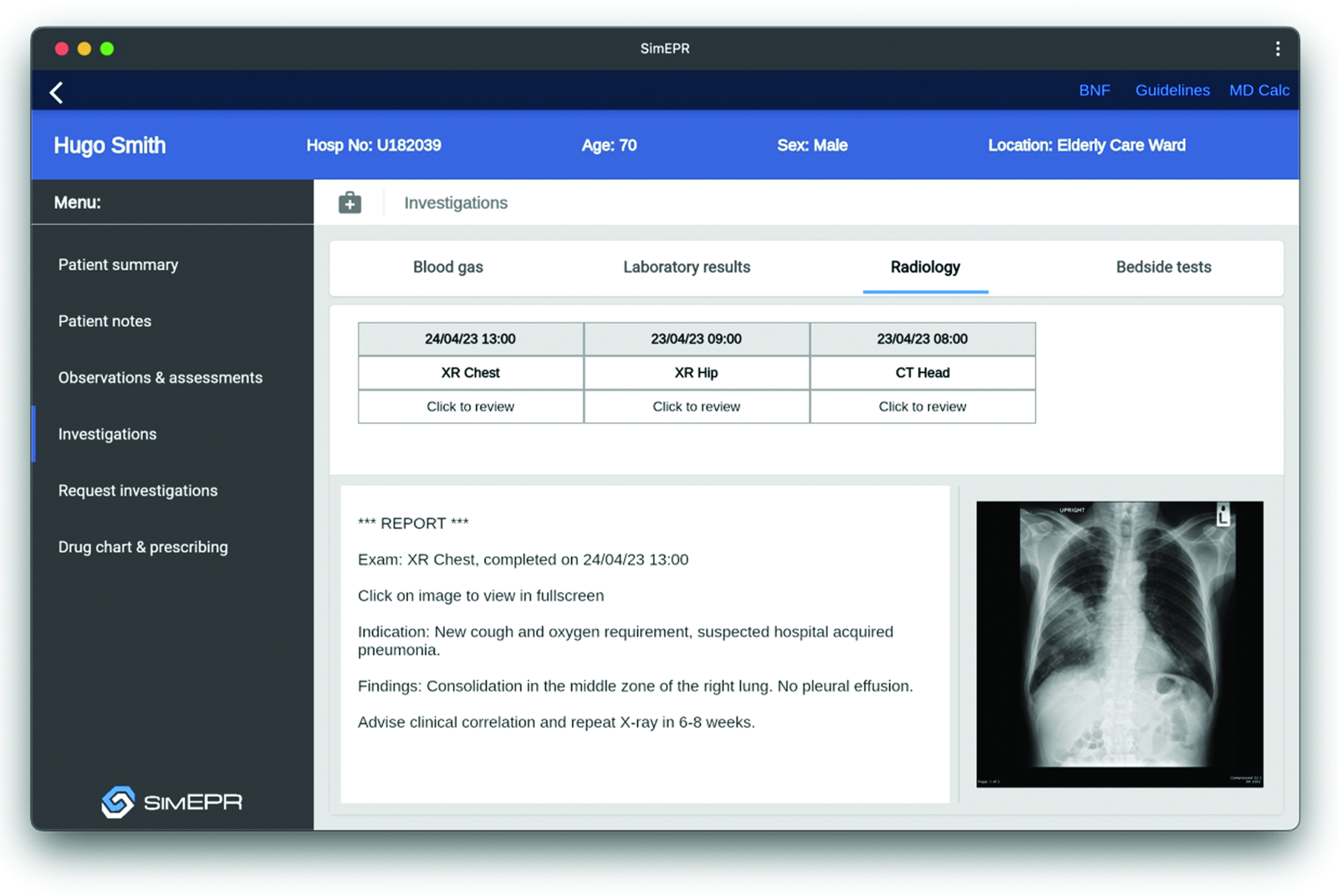
Electronic patient record (EPR) systems are increasingly prevalent in clinical settings, yet UK medical simulation training continues to use outdated paper-based methods for training healthcare staff. While published literature has highlighted the training benefits of incorporating EPRs into medical simulation training [1, 2], the transition has previously been hampered by a lack of bespoke software. To address this, a novel educational EPR (named SimEPR) was created, a bespoke training software designed to be used on a computer at the manikin’s bedside, which features customizable clinical scenarios (Figure 1-A102).


This project aimed to incorporate SimEPR into routine medical simulation training in the South East of England, and report trainee experience using the software.
Feedback data was collected from trainees who used SimEPR as part of their simulation training using an electronic feedback form. SimEPR was initially deployed in a medical school and two NHS trusts from 11th February 2021, before the project was scaled up to six additional educational centres (one university and five NHS trusts) from 3rd January 2023.
Data from 209 trainees was collected, of which 16% were medical students, 82% were foundation doctors and 2% were post-foundation doctors. Out of these, 86% reported that, compared to using paper notes, the educational EPR created a more realistic training experience. Meanwhile, 83% reported that the use of SimEPR helped improve their clinical learning. Last, 87% reported that they would recommend the simulation department to continue using SimEPR.
SimEPR is the first software of its kind designed specifically for UK medical education, and is the product of collaboration with a number of simulation leads and NHS-affiliated organizations. As well as data supporting a higher fidelity training experience, SimEPR incorporates digital skills into practical training, thus supporting the development of a digitally-ready workforce. In addition, by eliminating the use of paper, SimEPR contributes to the sustainable delivery of simulation-based education. Further evaluation work as part of this pioneering regional project aims to collect pre- and post-training feedback, feedback from medical educators and feedback from other healthcare disciplines.
In the longer term, SimEPR offers to transform the delivery of simulation training for the NHS workforce. The software’s ‘scenario-sharing’ function allows sharing of simulated patient records between institutions, supporting the standardization of training while saving staff time in building training scenarios. Furthermore, features such as performance analytics for trainee feedback, and AI technology to generate interactive scenarios, are being explored.
Authors confirm that all relevant ethical standards for research conduct and dissemination have been met. The submitting author confirms that relevant ethical approval was granted, if applicable.
1. Wilbanks BA, Watts PI, Epps CA. Electronic Health Records in Simulation Education: Literature Review and Synthesis. Simulation in Healthcare: The Journal of the Society for Simulation in Healthcare. 2018;13(4):261-267
2. Miller D. Board 212 - Program Innovations Abstract Simulating A Day In the Life of an Intern (Submission #414). Simulation in Healthcare: The Journal of the Society for Simulation in Healthcare. 2013; 8(6):468.